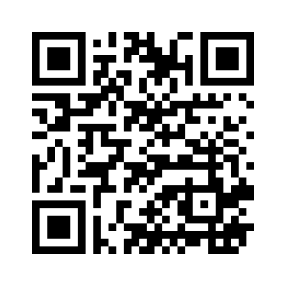Have you ever wished you could take control of your dreams, explore fantastical worlds, or even solve problems while you sleep? Lucid dreaming offers exactly that—a chance to become fully aware within your dreams and direct them as you wish. This fascinating phenomenon has captivated the minds of scientists, psychologists, and dream enthusiasts alike. In this article, we’ll explore what lucid dreams are, why they’re so intriguing, and provide practical techniques to help you take control of your dreams.
What Are Lucid Dreams?
Lucid dreams occur when you become aware that you’re dreaming while still in the dream state. This awareness allows you to consciously influence the dream’s narrative, environment, and outcomes. Imagine flying over mountains, meeting your favorite fictional characters, or confronting your fears in a safe, controlled space—all within the realm of your mind.
Research suggests that lucid dreaming is not just a fun experience but also a powerful tool for personal growth, creativity, and even overcoming nightmares. Studies have shown that lucid dreaming can improve problem-solving skills, reduce anxiety, and enhance self-awareness.
Why Are People Fascinated by Lucid Dreams?
The idea of controlling one’s dreams has fascinated humans for centuries. From ancient spiritual practices to modern scientific studies, lucid dreaming has been a subject of intrigue. Here are a few reasons why people are so drawn to it:
Freedom and Exploration: Lucid dreaming allows you to break free from the constraints of reality and explore limitless possibilities.
Overcoming Fears: Confronting fears in a lucid dream can help reduce anxiety in waking life.
Creative Inspiration: Many artists, writers, and inventors have drawn inspiration from their lucid dreams.
Personal Growth: Lucid dreaming can be a tool for self-discovery and emotional healing.
How to Induce Lucid Dreams: Proven Techniques
If you’re ready to take control of your dreams, here are some proven techniques to help you get started:
Reality Checking
Reality checking is a simple yet effective way to train your mind to recognize when you’re dreaming. Throughout the day, ask yourself, “Am I dreaming?” and perform a reality check, such as:
- Pinch your nose and try to breathe: In a dream, you’ll still be able to breathe.
- Look at a clock or text: In dreams, time and text often appear distorted or change when you look away.
- Push your finger through your palm: In a dream, your finger might pass through your hand.
By making this a habit, you’ll increase the likelihood of performing a reality check in your dream, triggering lucidity.
MILD (Mnemonic Induction of Lucid Dreaming)
Developed by psychologist Stephen LaBerge, the MILD technique involves setting an intention to recognize when you’re dreaming. Here’s how to practice it:
- Before bed, repeat a phrase like, “I will realize I’m dreaming” as you fall asleep.
- Visualize yourself becoming lucid in a recent dream.
- Focus on the feeling of being aware in the dream.
This technique leverages the power of intention and visualization to increase your chances of having a lucid dream.
WBTB (Wake Back to Bed)
The WBTB method involves waking up after a few hours of sleep, staying awake for a short period, and then going back to sleep. Here’s how it works:
- Set an alarm to wake up after 4-6 hours of sleep.
- Stay awake for 20-30 minutes, engaging in activities related to lucid dreaming, such as reading about it or practicing reality checks.
- Go back to sleep with the intention of becoming lucid.
This technique takes advantage of the REM (rapid eye movement) stage of sleep, when dreams are most vivid.
Dream Journaling
Keeping a dream journal is one of the most effective ways to improve dream recall and increase your chances of having lucid dreams. Here’s how to do it:
- Keep a notebook or app by your bed.
- Write down your dreams as soon as you wake up, even if they’re fragmented.
- Look for recurring themes or symbols that can serve as dream signs.
By recording your dreams, you’ll train your brain to pay more attention to them, making it easier to recognize when you’re dreaming.
Using Lucid Dreaming Gadgets
Technology has made it easier than ever to induce lucid dreams. Devices like lucid dreaming masks and apps use light and sound cues to remind you that you’re dreaming. For example:
- Lucid Dreaming Masks: These masks detect when you enter REM sleep and flash lights or play sounds to trigger lucidity.
- Lucid Dreaming Apps: Apps like Dreamly offer guided meditations, reality check reminders, and dream journaling features.
While these gadgets can be helpful, they work best when combined with other techniques like reality checking and dream journaling.
Tips for Staying Lucid in Your Dreams
Once you’ve achieved lucidity, it’s important to stay in the dream state. Here are some tips to help you maintain control:
- Stay Calm: Excitement can wake you up. Focus on staying calm and grounded.
- Engage Your Senses: Rub your hands together, spin around, or touch objects in the dream to stabilize it.
- Set Intentions: Decide what you want to do in the dream, whether it’s flying, exploring, or solving a problem.
The Benefits of Lucid Dreaming
Lucid dreaming isn’t just a fun experience—it also offers numerous benefits:
- Overcoming Nightmares: By becoming lucid, you can confront and change the outcome of recurring nightmares.
- Boosting Creativity: Many artists and inventors have used lucid dreams to spark new ideas.
- Improving Mental Health: Lucid dreaming can help reduce anxiety and improve emotional resilience.
- Enhancing Problem-Solving Skills: You can practice solutions to real-life problems in a safe, dream environment.
Common Challenges and How to Overcome Them
While lucid dreaming is an exciting skill to develop, it can come with challenges:
- Difficulty Becoming Lucid: Be patient and consistent with your practice. It can take weeks or even months to achieve your first lucid dream.
- Waking Up Too Soon: If you find yourself waking up, try spinning in the dream or focusing on a specific object to stabilize it.
- False Awakenings: Sometimes, you may dream that you’ve woken up. Perform a reality check to confirm whether you’re truly awake.
Unlock the Power of Your Dreams
Lucid dreaming is a powerful tool for exploring the depths of your mind, overcoming fears, and unlocking your creative potential. By practicing techniques like reality checking, MILD, and dream journaling, you can take control of your dreams and transform them into a playground for self-discovery and growth.
Whether you’re a beginner or an experienced dreamer, the journey to lucid dreaming is both rewarding and enlightening. So, why not start tonight? Keep a dream journal by your bed, set your intentions, and take the first step toward mastering the art of lucid dreaming.






